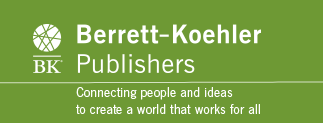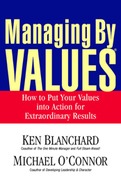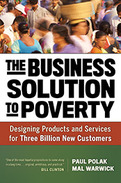Summary
- Written by the coauthor of the bestselling 301 Ways to Have Fun at Work (more than 50,000 copies sold)
- Accessible information on creating a fun work environment, written for anyone who works in any size or type o
Summary- Written by the coauthor of the bestselling 301 Ways to Have Fun at Work (more than 50,000 copies sold)
- Accessible information on creating a fun work environment, written for anyone who works in any size or type o
With constrained schedules and anxious stakeholders eager for results, the typical IT project team doesn't have the luxury of wading through lengthy tomes to find solutions. The IT Project Management Answer Book guides you to the specific answers you need to successfully conduct and complete your IT project.
Written in an easy-to-use question-and-answer format, the book covers all aspects of managing an IT project, from initial organizational issues to closeout. Following the classic project management processes, author David Pratt builds on the basics to offer valuable insights not found in other resources, including:
• Proven techniques such as the best way to manage defects
• How to create performance standards for outside contractors
• How to develop a user's manual
For more technically inclined team members, the author's plain-speak approach presents a refreshing view of the IT world. For those less technically oriented, he describes the tools and solutions for dealing with IT project challenges in an accessible, straightforward way. Let this information-packed resource lead you and your team to IT project success.
2003
Today's business world is characterized by increasing change-technological, cultural, social, economic, and personal-the net effect of which is increasing anxiety, insecurity, and more pressure than perhaps ever before on today's employees, managers, and business owners. Managing By Values provides a practical, proven new solution for addressing these issues. Ken Blanchard and Michael O'Connor provide a framework for stability, continuity, and growth in the midst of these challenges.
Managing By Values describes a new measure and level of organizational success-beyond that of "Fortune 500" organizations. Blanchard and O'Connor show how organizations can commit to a way of doing business that enables all stakeholders-owners/shareholders, employees, customers, and others-to win. By committing to a common purpose and set of values, any organization can join the ranks of the "Fortunate 500." This list is defined, not by size or volume or profits, but by the quality of service available to customers and the quality of life accessible to employees.
Numerous books written over the last decade have stated both the need for, and power of, an organizational culture whose strategies, processes, and people are managed by a common vision, purpose, and set of values. Managing By Values goes beyond merely lobbying for such a management approach. Blanchard and O'Connor provide readers with a practical game plan that clarifies, communicates, and aligns the organization's practices at all levels and in all areas, with a defined, functional set of guiding values adopted throughout the organization. Many previous books have addressed the importance of values, but Managing By Values provides a clear methodology for defining and implementing such values to achieve organizational, group, team, and individual objectives.
Written in the simple, direct story format that has become a trademark of Ken Blanchard's previous books, Managing By Values builds on the mass of diverse research, experiences, and literature on organizational, group, and individual performance and satisfaction. Based on the authors' research and applied real-world experience with client organizations, Managing By Values provides a practical, proven approach for how to give your organization the gift of a promising future while also discovering a way for all of its stakeholders to be satisfied in the process.
- From the coauthor of The One Minute Manager, one of the bestselling business books of all time (over 9 million copies sold), and Empowerment Takes More Than a Minute (a 1996 BusinessWeek bestseller)
- Provides a concise game plan for designing and implementing a set of guiding values to achieve organizational, group, team, and individual objectives
The nearly three billion people living on $2 a day are not just the world's greatest challenge-they represent an extraordinary market opportunity.
- Shows why business is better equipped to eradicate world poverty than nonprofits or governments
- Coauthored by businessman and inventor Paul Polak, who has helped nearly twenty million people get out of poverty, and prominent serial social entrepreneur Mal Warwick
- Details how to design and market products that transform the lives of the world's poor-and make a nice profit
The nearly three billion people living on $2 a day are not just the world's greatest challenge-they represent an extraordinary market opportunity. The key is what Paul Polak and Mal Warwick call Zero-Based Design: starting from scratch to create innovative products and services tailored for the very poor, armed with a thorough understanding of what they really want and need and driven by what Polak and Warwick call "the ruthless pursuit of affordability."
Polak has been doing this work for years, and Warwick has extensive experience in both business and philanthropy. Together, they show how their design principles and vision can enable unapologetic capitalists to supply the very poor with clean drinking water, electricity, irrigation, housing, education, health care, and other necessities at a fraction of the usual cost and at profit margins comparable to those of businesses in the developed world.
Promising governmental and philanthropic efforts to end poverty have not reached scale because they lack the incentives of the market to attract massive resources. This book opens an extraordinary opportunity for nimble entrepreneurs, investors, and corporate executives that will result not only in vibrant, growing businesses but also a better life for the world's poorest people.
In this sure-to-be-controversial book, leading management thinker Henry Mintzberg turns his attention to reframing the management and organization of health care.
The problem is not management per se but a form of remote-control management detached from the operations yet determined to control them. It reorganizes relentlessly, measures like mad, promotes a heroic form of leadership, favors competition where the need is for cooperation, and pretends that the calling of health care should be managed like a business.
“Management in health care should be about dedicated
and continuous care more than interventionist and episodic cures.”
This professional form of organizing is the source of health care's great strength as well as its debilitating weakness. In its administration, as in its operations, it categorizes whatever it can to apply standardized practices whose results can be measured. When the categories fit, this works wonderfully well. The physician diagnoses appendicitis and operates; some administrator ticks the appropriate box and pays. But what happens when the fit fails—when patients fall outside the categories or across several categories or need to be treated as people beneath the categories or when the managers and professionals pass each other like ships in the night?
To cope with all this, Mintzberg says that we need to reorganize our heads instead of our institutions. He discusses how we can think differently about systems and strategies, sectors and scale, measurement and management, leadership and organization, competition and collaboration.
“Market control of health care is crass, state control is crude, professional control is closed. We need all three—in their place.”
The overall message of Mintzberg's masterful analysis is that care, cure, control, and community have to work together, within health-care institutions and across them, to deliver quantity, quality, and equality simultaneously.
As a triple minority who passes for a straight white woman in corporate America, Dannie Lynn Fountain has seen too many companies pretend to care about diversity, equity, and inclusion (DEI) only for its public relations outcomes. In Ending Checkbox Diversity, Fountain explores how the current structure of corporate DEI lends itself to the continued oppression of marginalized identities. She examines the narrow objectives and metrics that allow for shallow or no improvement and how shifting diversity responsibility to employee resource groups enables companies to disclaim responsibility for making meaningful progress. She looks at the impact of Zennials and Gen Zers, the most diverse generations ever, and breaks down precisely why some notable examples of poor DEI initiatives failed (and what should have been done differently). And she builds a road map for what real DEI looks like and how to avoid the performative allyship trope.
























